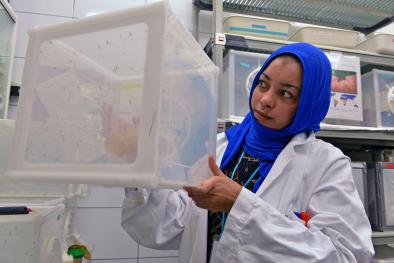Science Source
Climate change and vector-borne diseases: a regional analysis
- States that current evidence suggests inter-annual and inter-decadal climate variability have a direct influence on the epidemiology of vector-borne diseases
- Assesses available evidence at the continental level in order to determine the possible consequences of the expected future climate change
- States that by 2100 the average global temperatures will have risen by an estimated 1.0–3.5°C, increasing the likelihood of many vector-borne diseases in new areas
- States that the greatest effect of climate change on transmission is likely to be observed at the extremes of the range of temperatures at which transmission occurs
- Holds that malaria and dengue fever are among the most important vector-borne diseases in the tropics and subtropics; Lyme disease is the most common vector-borne disease in the USA and Europe
- States that risks due to climatic changes will differ between countries that have developed health infrastructures and those that do not
- Finds that while 70% of the population in South America is urbanized, the proportion in sub-Saharan Africa is less than 45%
- States that climatic anomalies associated with the El Niño–Southern Oscillation phenomenon and resulting in drought and floods—phenomena linked to outbreaks of malaria in Africa, Asia and South America—are expected to increase in frequency and intensity
Related Content
Science Source
| The Lancet
El Niño and climate change—contributing factors in the dispersal of Zika virus in the Americas? - The Lancet
Shlomit Paz, Jan C Semenza
Science Source
| Proceedings of the National Academy of Sciences
Global risk model for vector-borne transmission of Zika virus reveals the role of El Niño 2015
Cyril Caminade, Joanne Turner, Soeren Metelmann et al
Headline

Apr 7, 2017 | Carbon Brief
Zika outbreak ‘fuelled by’ El Niño and climate change
Science Source
| MMWR. Morbidity and Mortality Weekly Report
Vital Signs: Update on Zika Virus–Associated Birth Defects and Evaluation of All U.S. Infants with Congenital Zika Virus Exposure — U.S. Zika Pregnancy Registry, 2016
Megan R. Reynolds, MPH; Abbey M. Jones, MPH; Emily E. Petersen et al


